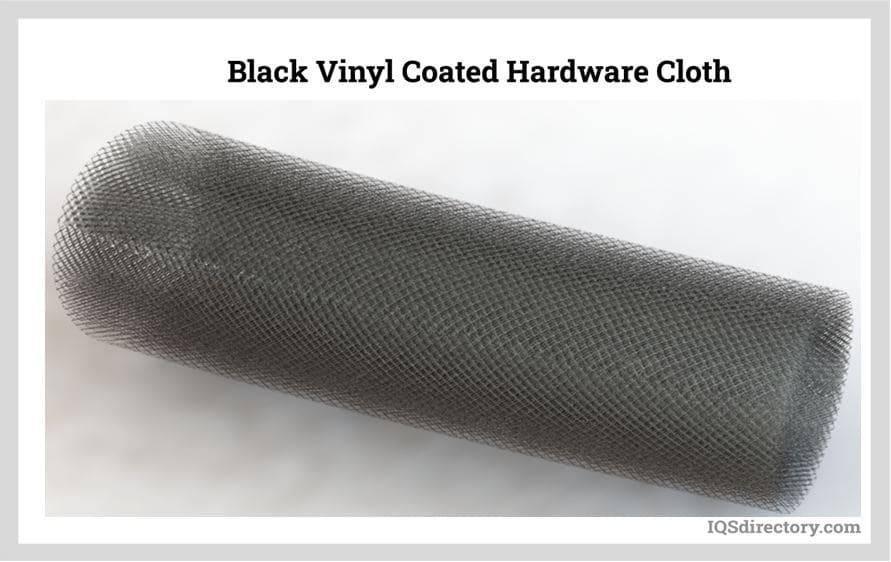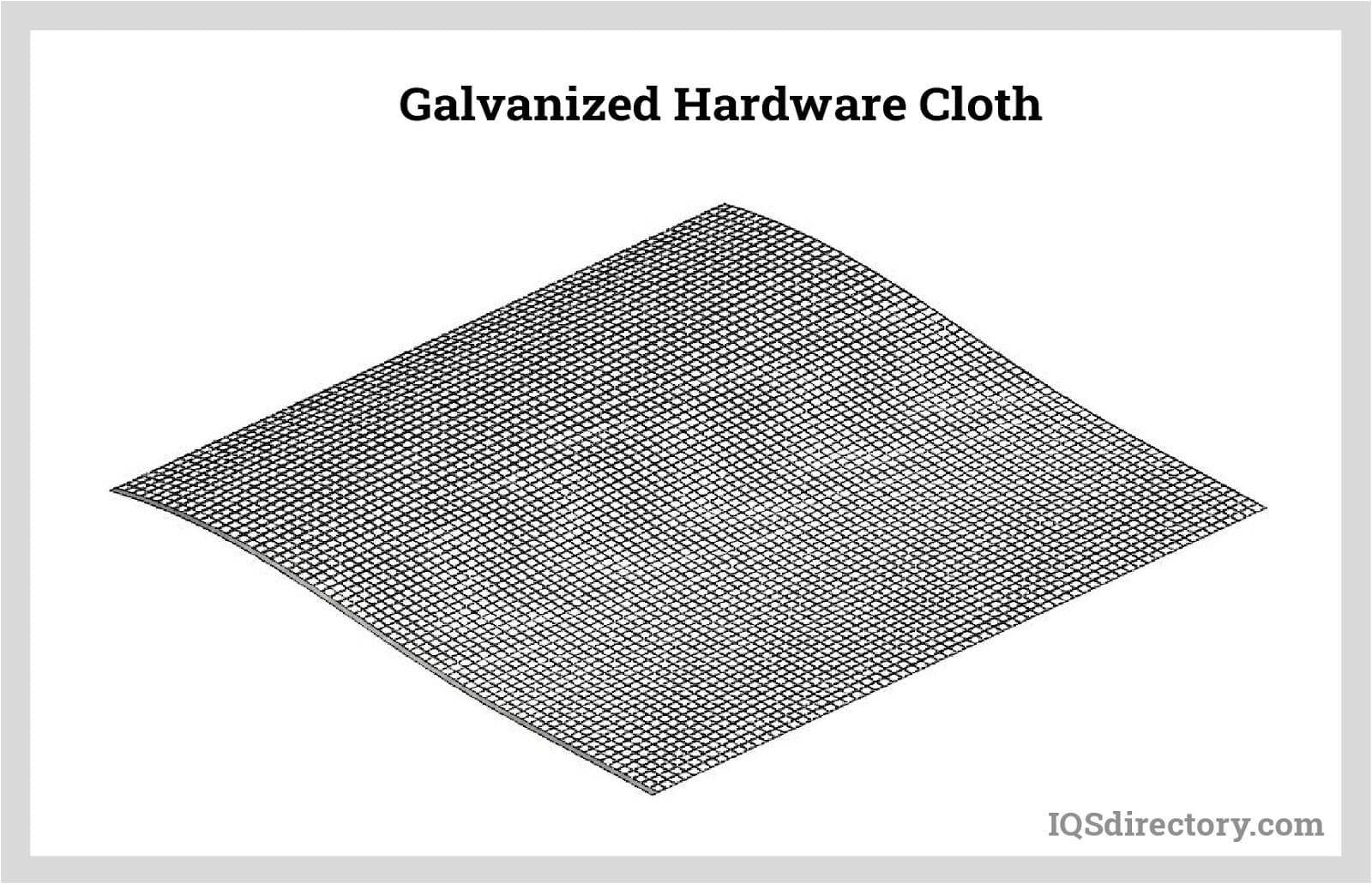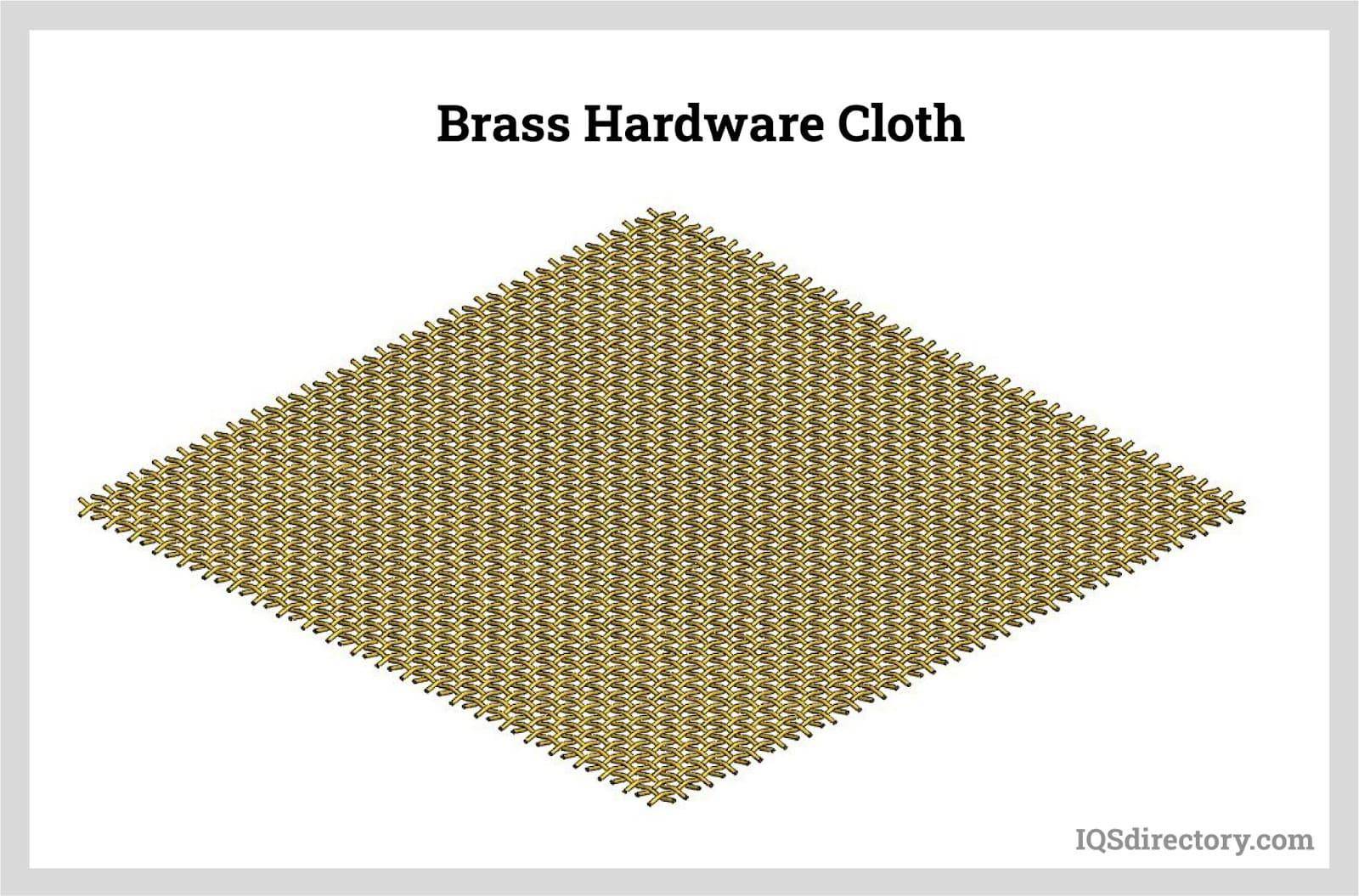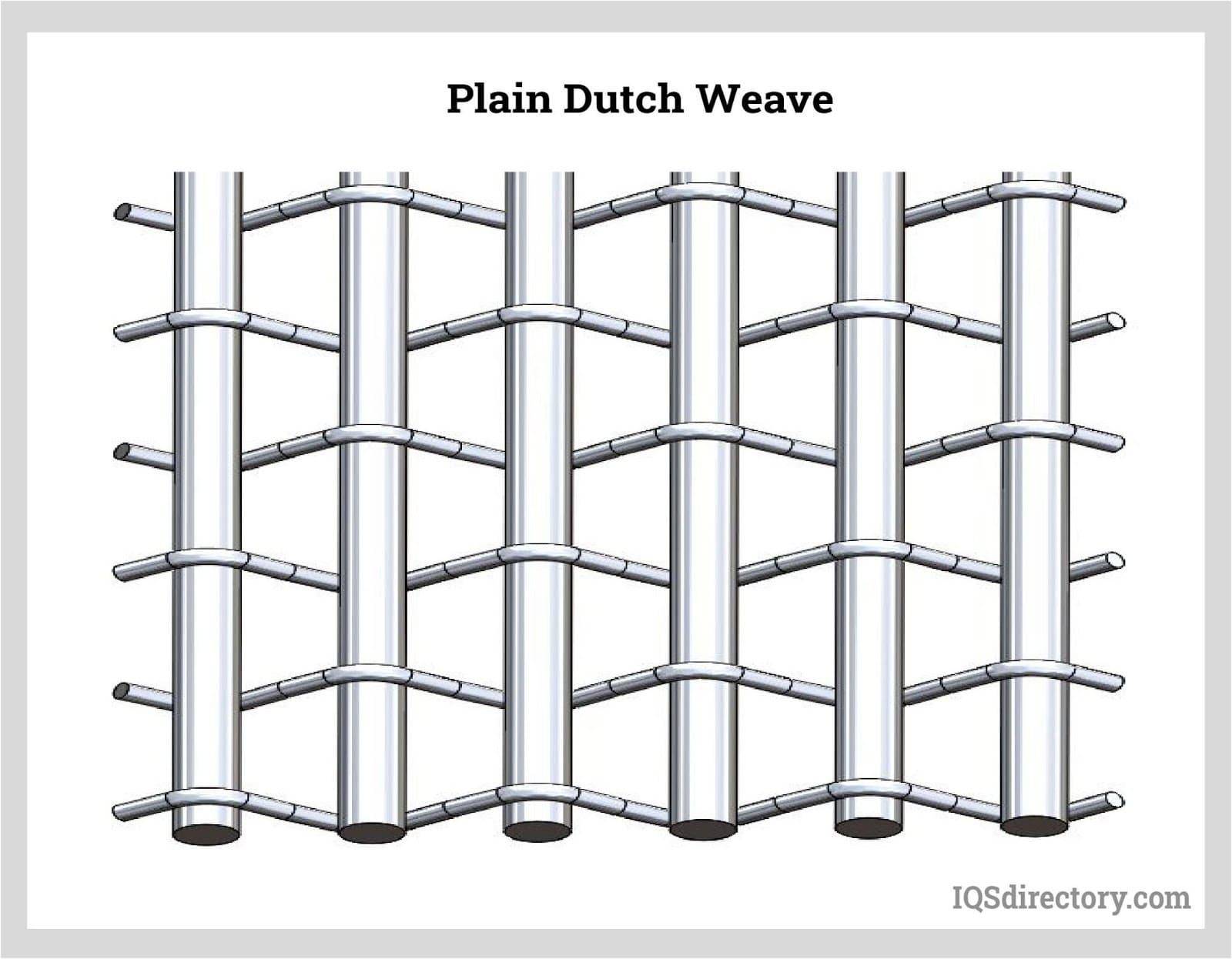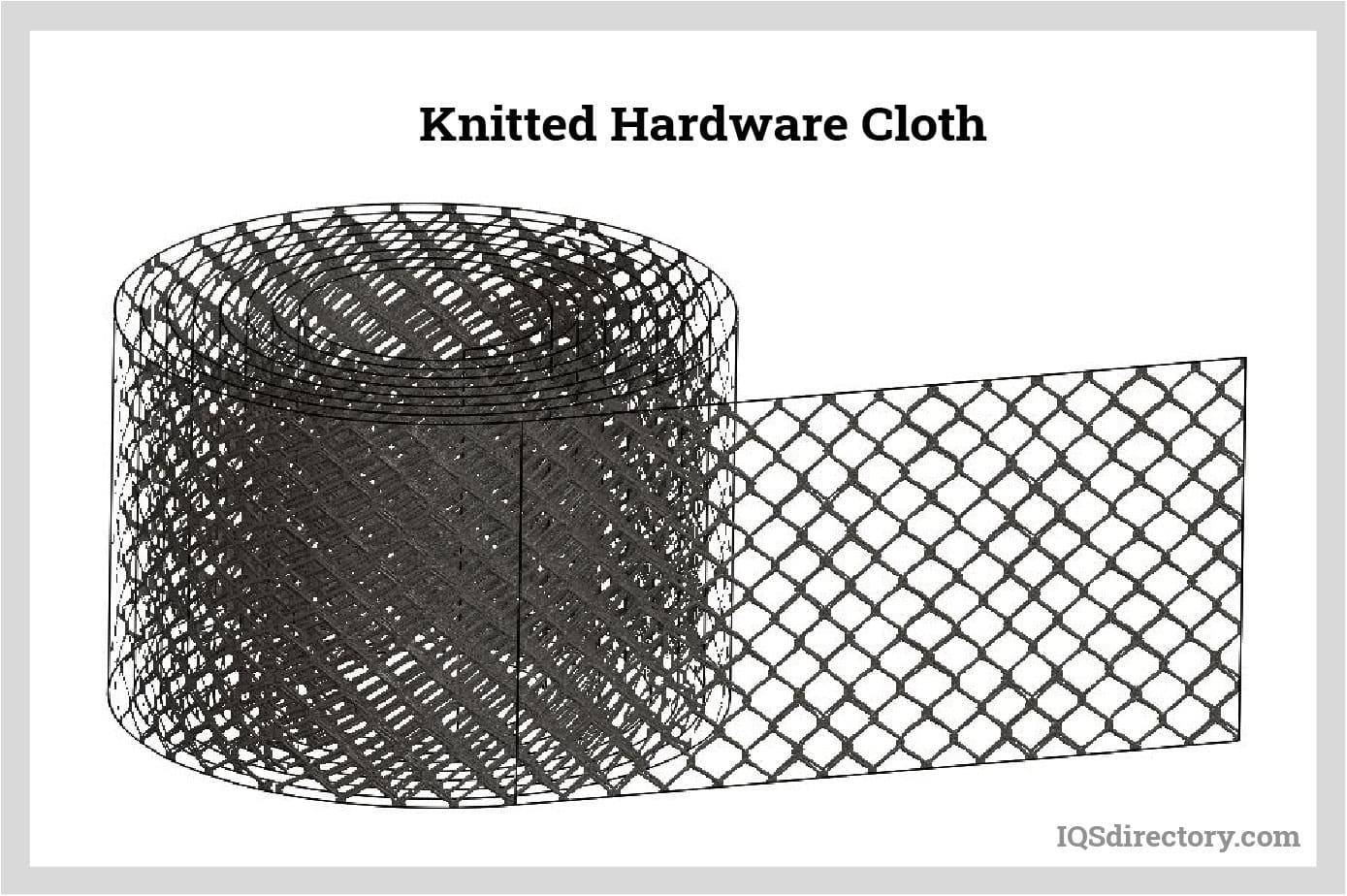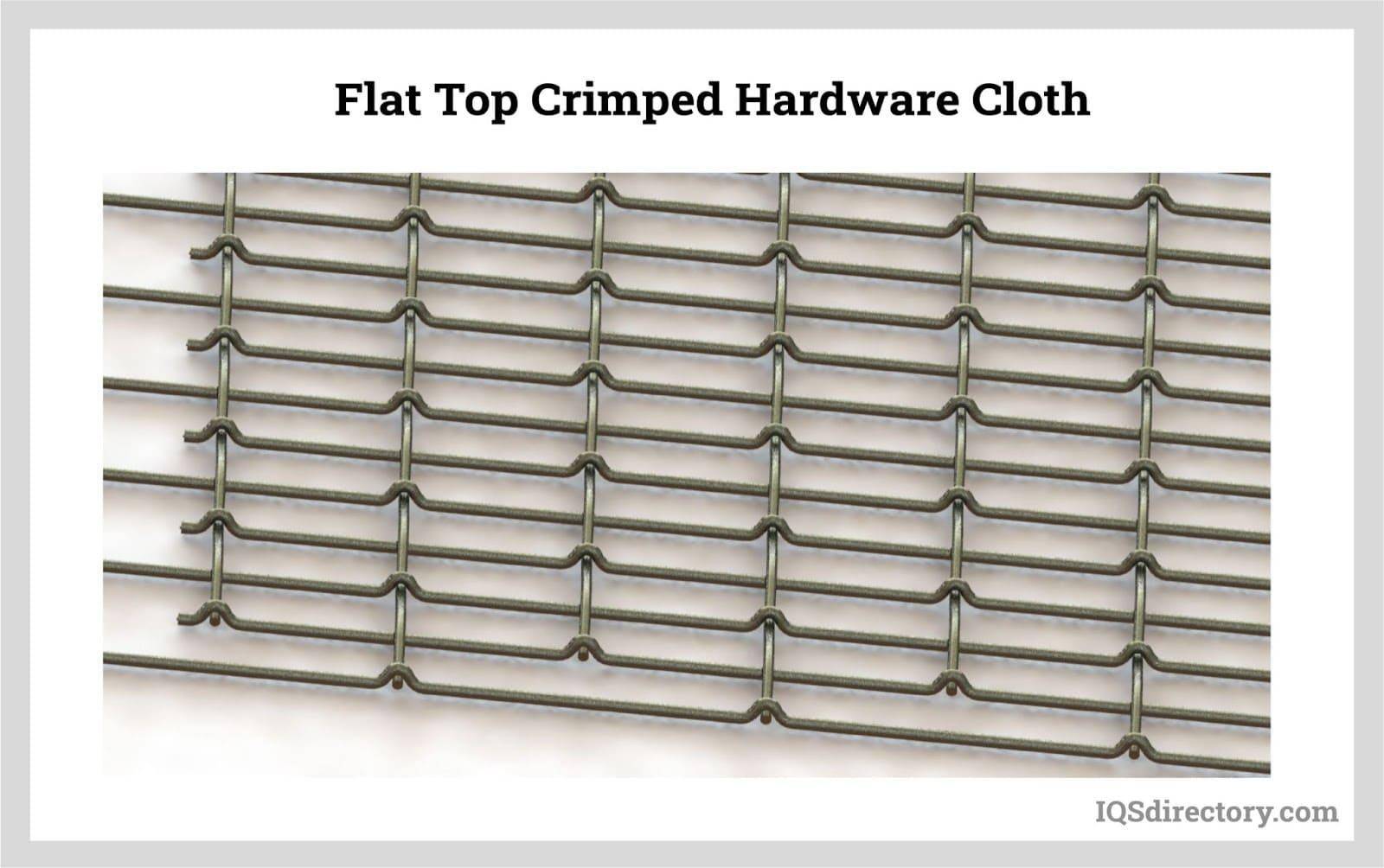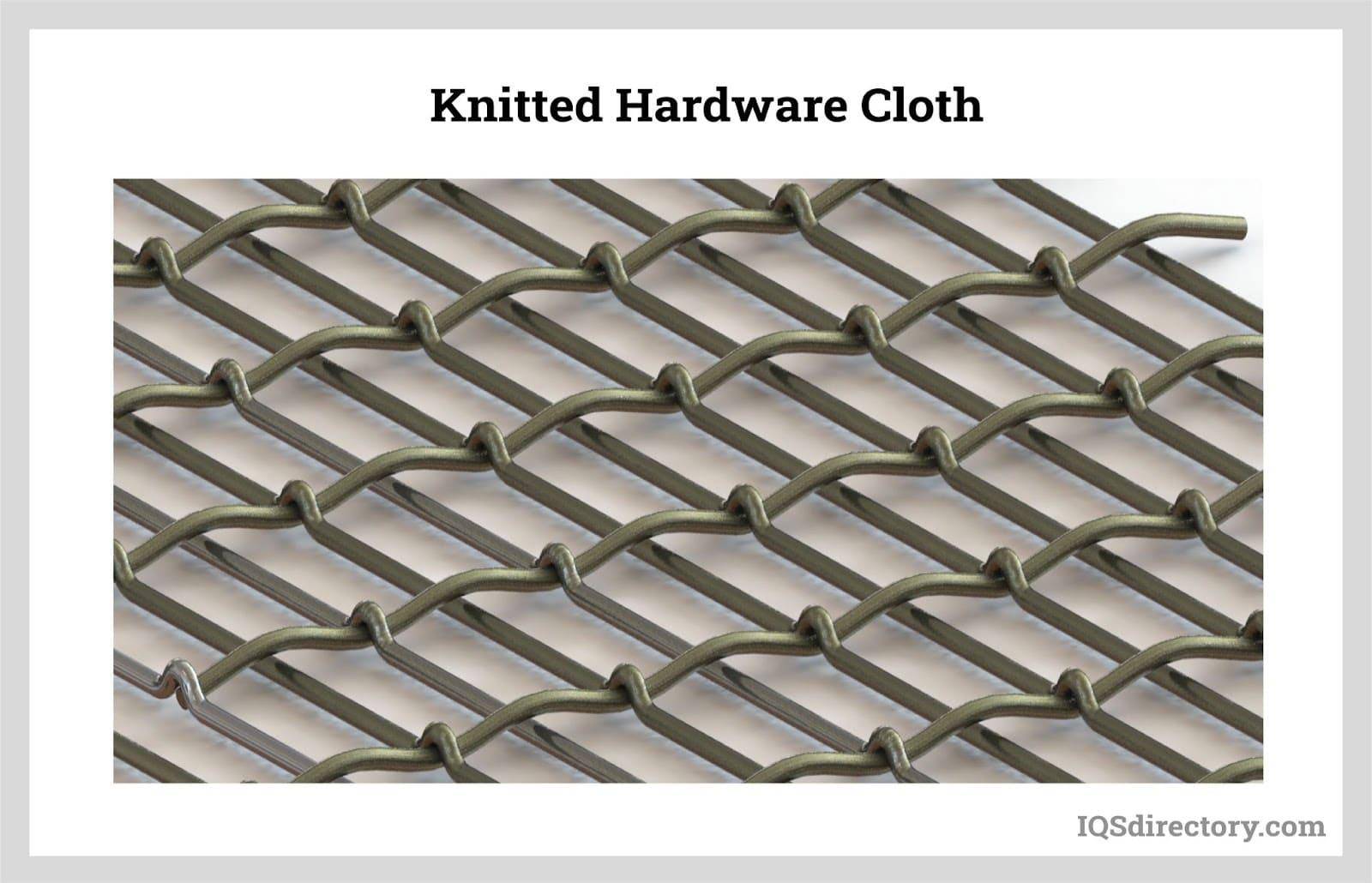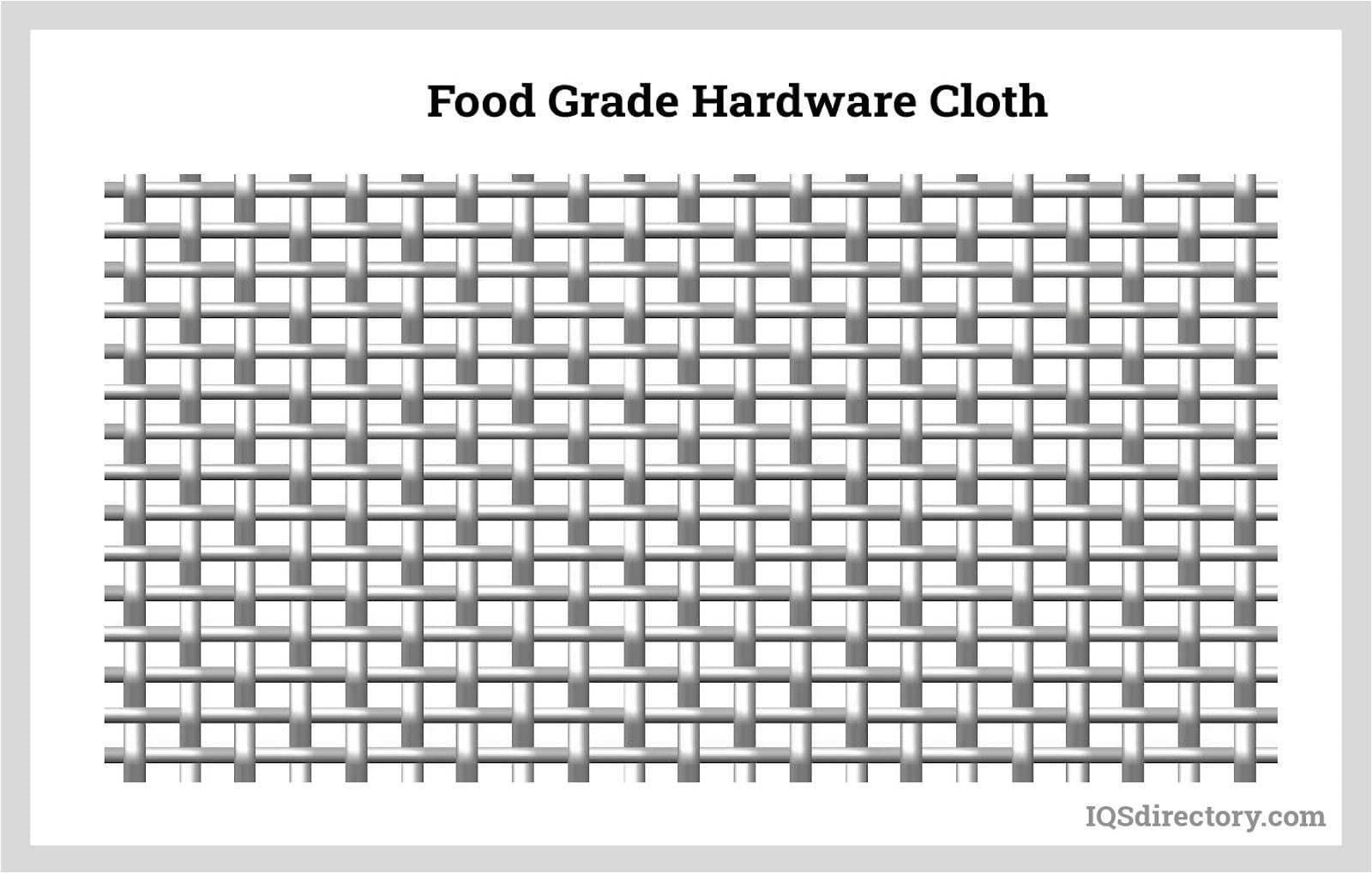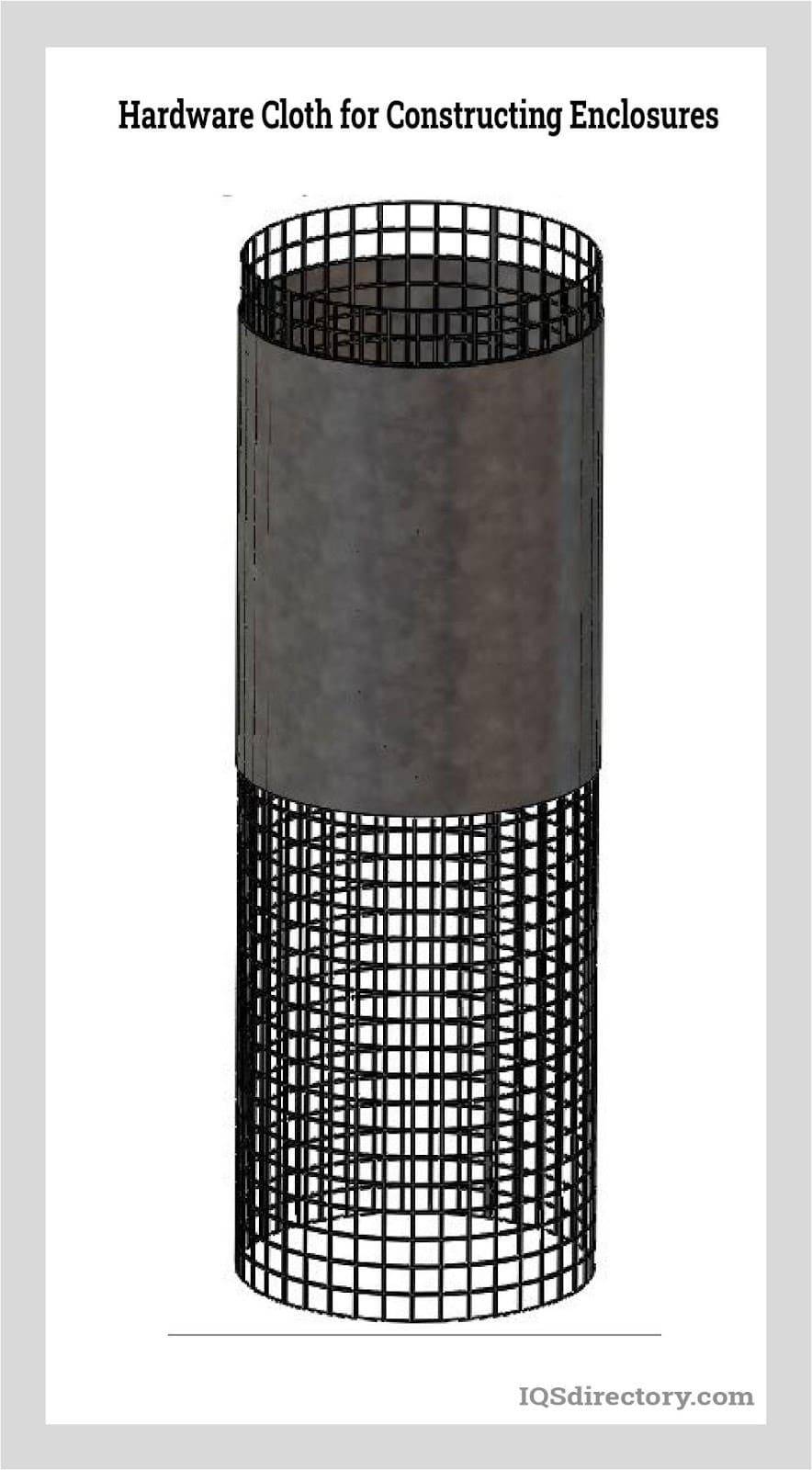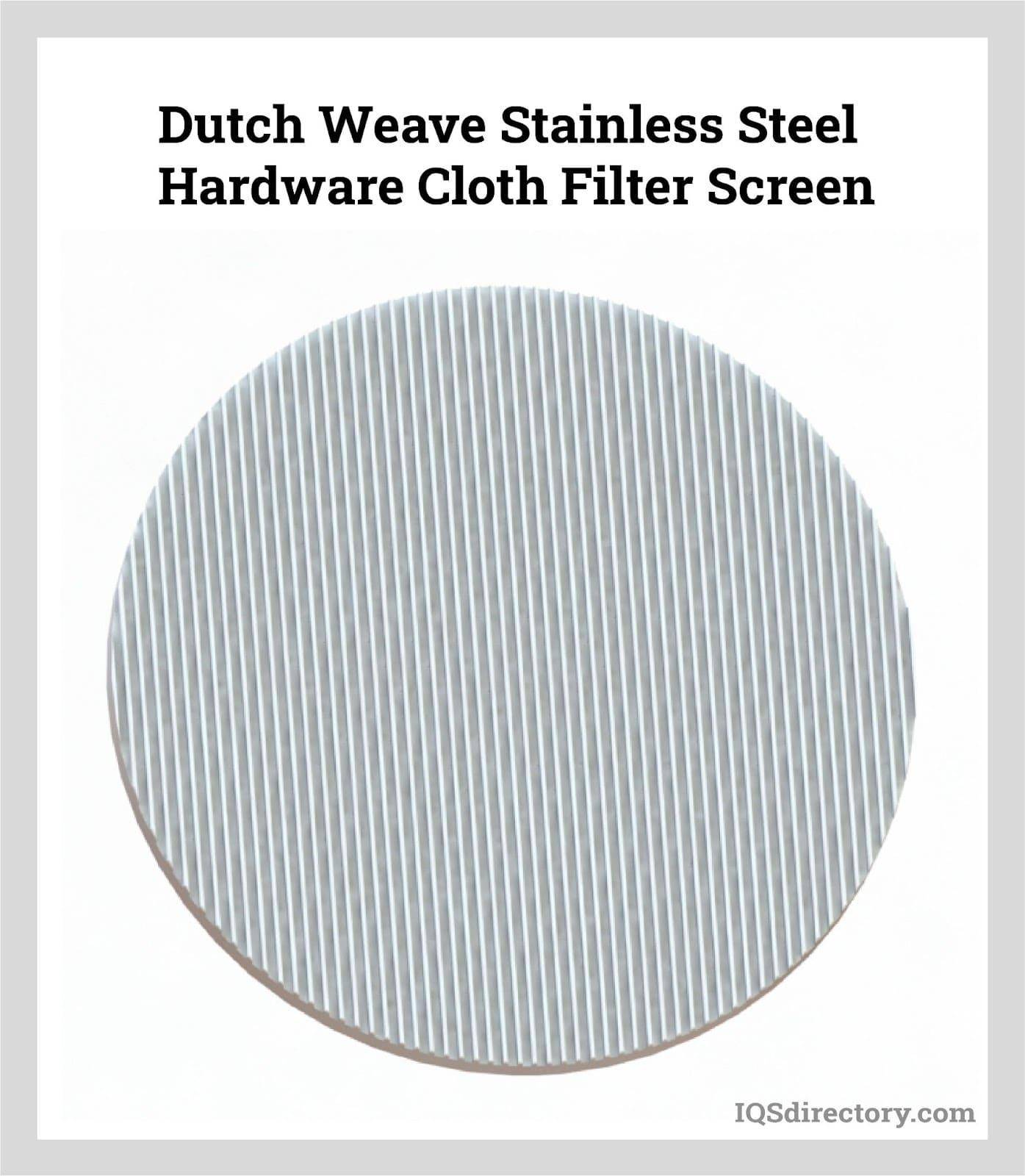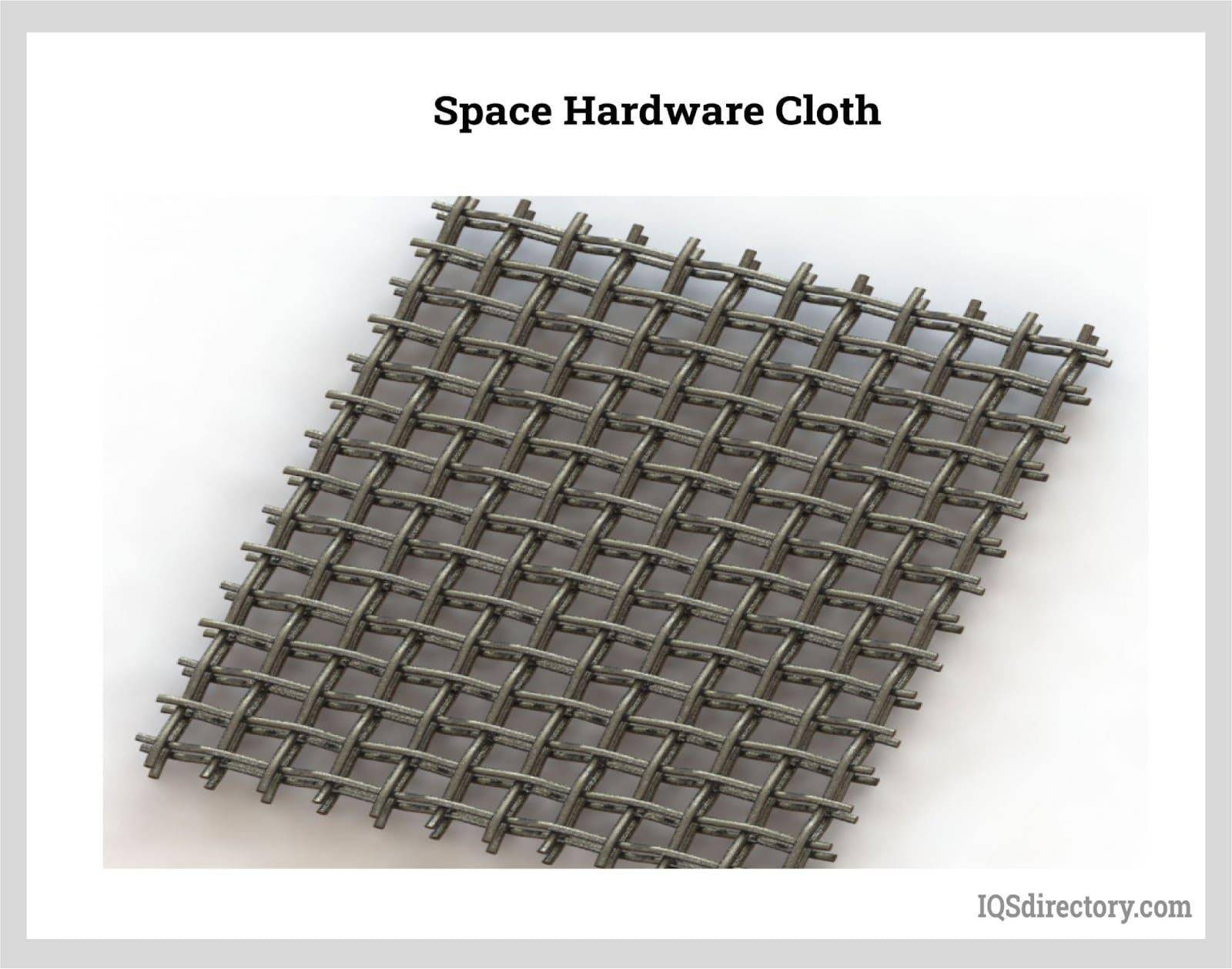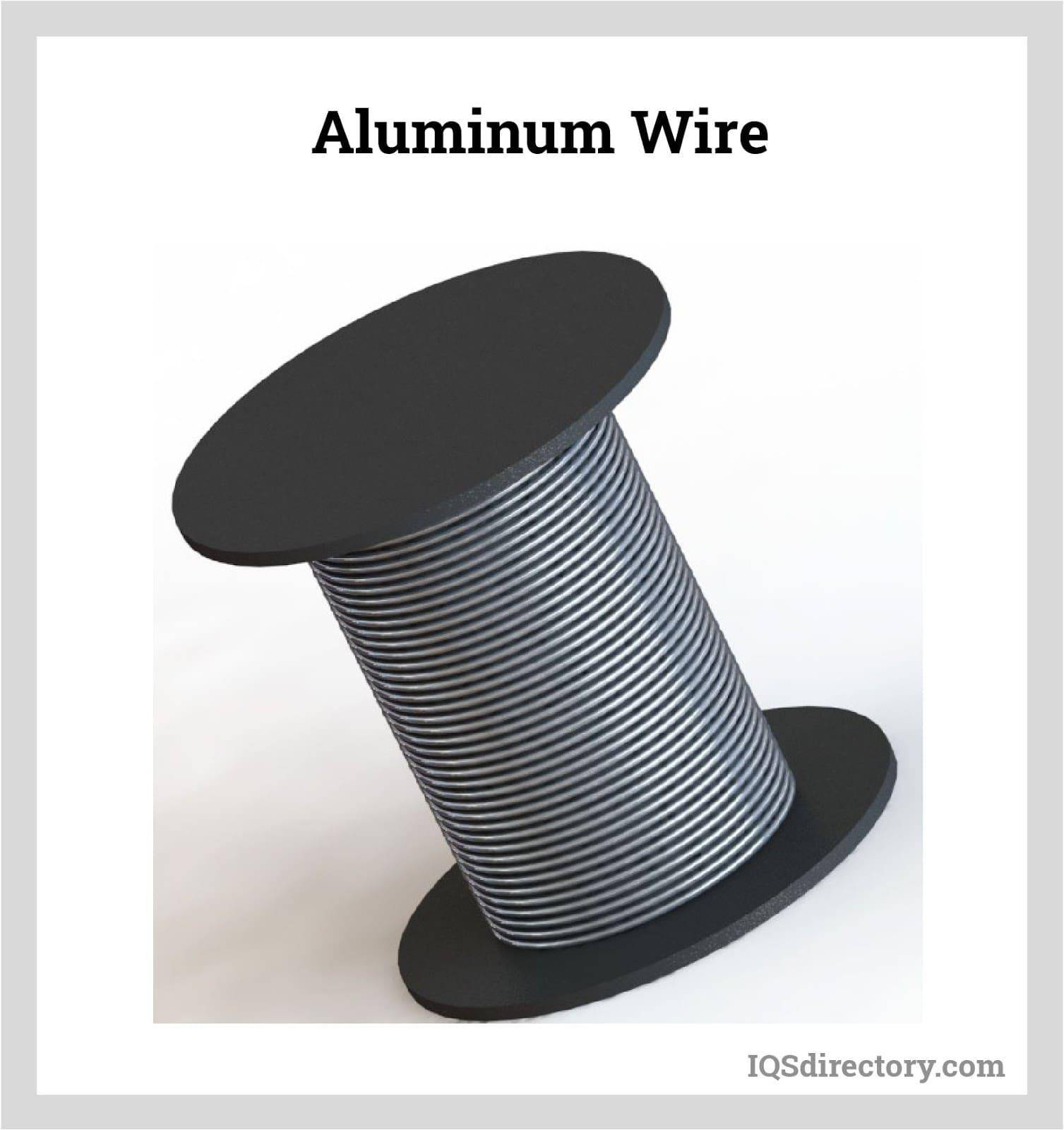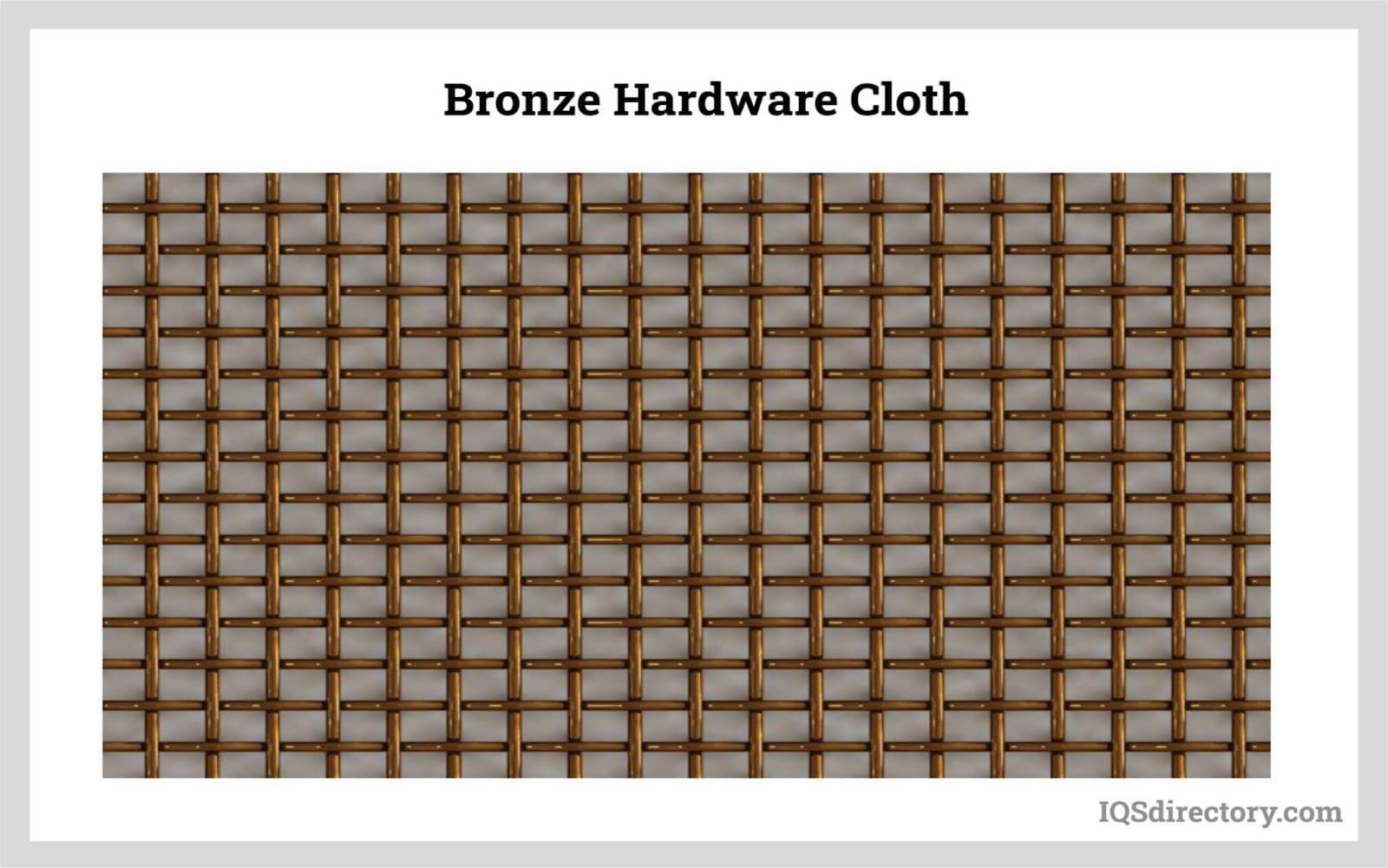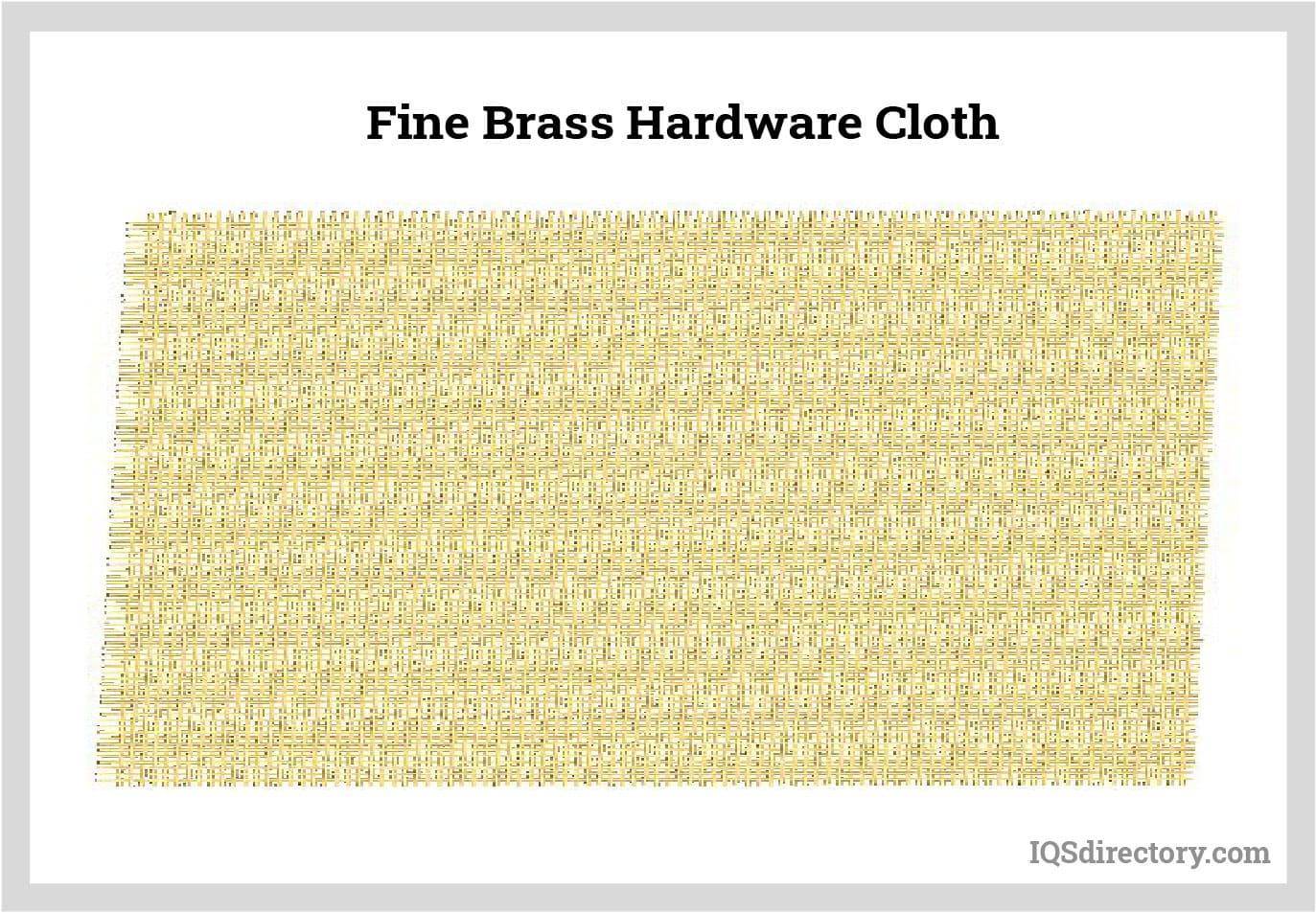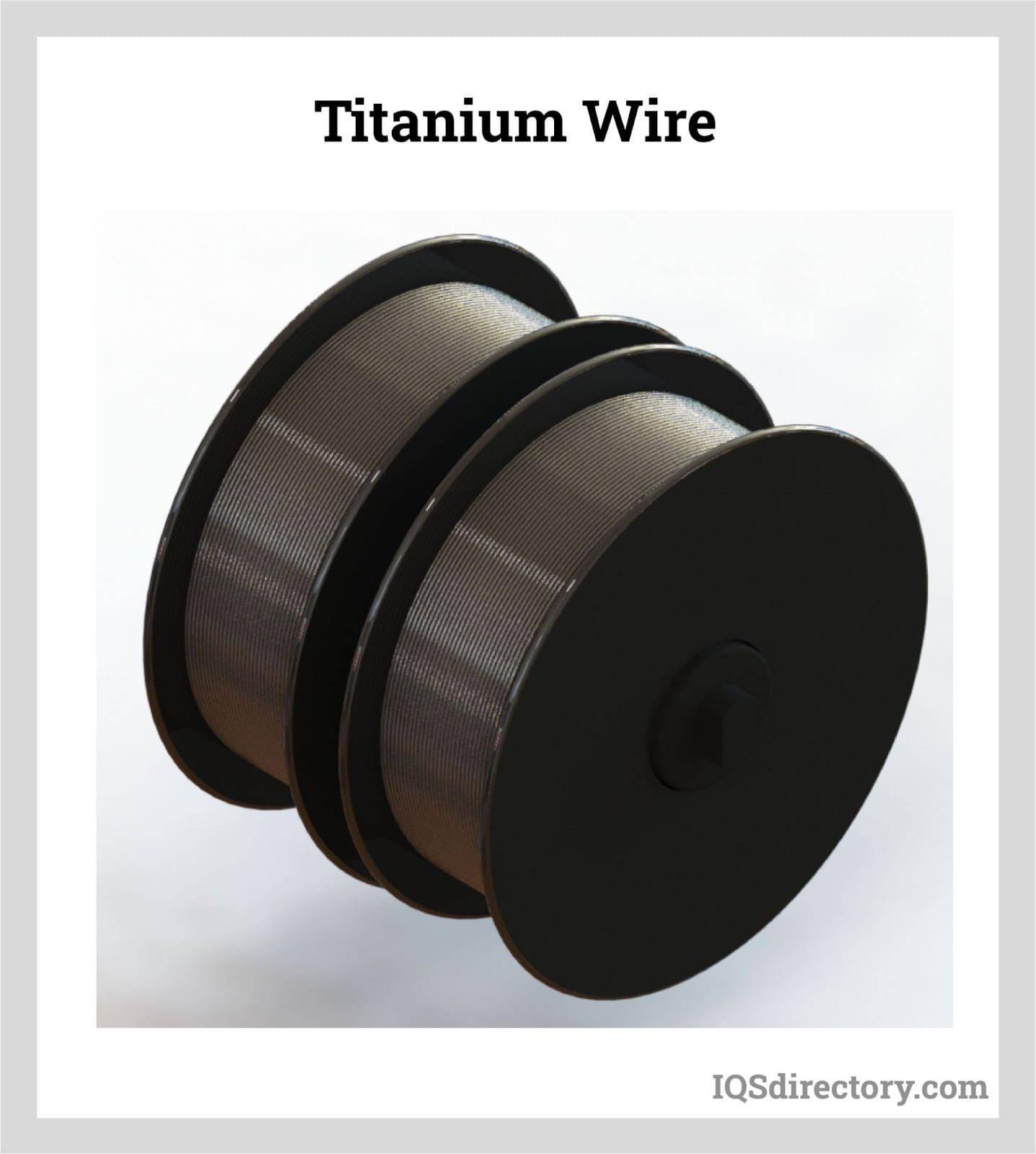Editorial by Industrial Quick Search
Hardware cloth is a woven mesh product crafted by intertwining wire of various sizes to create a versatile metallic fabric. It’s widely implemented in projects such as animal enclosures, fencing, sieves, and filtration screens. Differences in hardware cloth are determined by the wire type and gauge, finishing processes, and the technique for binding wire fibers at crossover points.
For hardware cloth, a higher gauge signifies a thinner wire. The typical wire gauges for this material include 16, 19, 23, 24, and 27, with gauge 16 being the thickest and largest. These gauges determine the robustness and applications of the mesh in different environments and usages.
Stainless steel hardware cloth is renowned for its long-lasting corrosion resistance and exceptional mechanical strength, making it an excellent choice for demanding environments where exposure to moisture or chemicals is common. Produced using grades like 304, 304L, 316, and 306L, stainless steel hardware cloth is available in both plain and twill weave configurations to suit different performance requirements.
Carbon steel hardware cloth is valued for its ductility and customizable strength properties, which are determined by varying its carbon content. This makes it ideal for applications requiring impact resistance and robust support. Hardware cloth can be manufactured from four main grades of carbon steel, each with its own physical characteristics:
Containing 0.05% to 0.25% carbon and up to 0.4% manganese, low carbon steel—also called mild steel—is highly malleable and often carburized for improved hardness. It is widely used in general-purpose mesh for screens, cages, and garden fencing.
Featuring a carbon content between 0.29% and 0.54% and manganese between 0.6% and 1.65%, medium carbon steel hardware cloth offers enhanced wear resistance and strength, making it suitable for heavy-duty barriers and machinery guards.
With 0.55% to 0.95% carbon and 0.3% to 0.9% manganese, high carbon steel produces exceptionally strong and durable hardware cloth used in applications with high tensile and impact demands, such as quarry and mining screens.
This grade contains 0.96% to 2.1% carbon, resulting in a strong but relatively brittle material best reserved for highly specialized uses.
Historically, galvanized steel hardware cloth has been the industry standard for fencing and protective barriers. Its zinc coating delivers powerful rust protection, extending the lifespan of the mesh in outdoor conditions. Many suppliers offer hot-dip galvanized, electro-galvanized, and vinyl-coated hardware cloth to provide even greater corrosion resistance tailored to user requirements.
Beyond these main metals, hardware cloth can be manufactured from an array of materials, including copper, aluminum, monel, and brass. Each metal offers unique performance benefits such as enhanced electrical conductivity, superior ductility, or specialized chemical resistance.
The image below features brass hardware cloth , appreciated for its pleasing appearance and excellent abrasion and wear resistance, composed of approximately 80% copper and 20% zinc. Brass mesh is often used in industrial filtration, decorative screens, and architectural mesh panels.
Welded wire hardware cloth is created by aligning horizontal and vertical wires to match the desired mesh opening, then passing the assembly through an automated welding machine. Each intersection is fused with electric resistance welding, forming a robust, permanent joint that adds immense rigidity and strength. Welded hardware cloth is preferred where structural integrity and security are priorities, such as in security fencing, animal enclosures, and building reinforcements. It is available in a selection of opening sizes, gauges, and metal finishes, supporting user requirements for pest exclusion, ventilation, and perimeter barriers.
Woven hardware cloth is manufactured by intertwining wires using specialized looms. This weaving method produces a mesh with uniform openings, excellent flexibility, and precise control over mesh size and wire gauge. Woven wire mesh is ideal for applications like insect screening, filtration, ventilation grills, rodent proofing, and sieving, where the ability to select exact open area and mesh count is critical. Manufacturing processes may be proprietary, but the primary goal is to achieve reliable mesh consistency and flexibility for a broad range of end uses.
The plain weave—also known as square weave—is the most common weaving pattern for hardware cloth. In this process, the warp (vertical) and weft (horizontal) wires alternate passing over and under each other, producing uniform square openings. This design is favored for fencing, aviaries, and general screening due to its balance of strength and versatility.
Each weft wire in a twilled weave pattern alternately passes above and below two successive warp wires, enabling the use of heavier gauge wire. This makes twilled weave mesh suitable for industrial filtration, heavy screening, and applications where extra durability is required.
Dutch weave hardware cloth involves combining a thicker warp wire with a finer weft wire to create very dense mesh with minimal open area. This pattern is commonly used for fine filtration, liquid-solid separation, and pressure-driven processes. Variations like reverse, twilled, and reverse twilled Dutch weave support specific industrial requirements.
The five heddle weave creates a series of parallel diagonal lines, increasing load capacity and impact resistance. Suitable for heavy-duty industrial screens and support mesh, this method ensures longevity in high-stress environments.
Besides these standard weaves, hardware cloth may also be manufactured using varied patterns such as oblong, multi-layer, cable, and spiral weaves to address unique requirements for ventilation, strength, or decorative appeal in custom mesh projects.
Knitted wire mesh forms hardware cloth with interconnected loops, resulting in a flexible and compressible mesh structure. Its honeycomb design offers durability, elasticity, and bi-directional stretch, making it practical for applications like air filtration systems, muffler packing, demisters, and EMI/RFI shielding. Knitted hardware cloth is available in round wire and flat ribbon forms with a variety of material options, and it is favored for uses demanding both flexibility and high strength in complex settings.
Crimped hardware cloth, produced from both ferrous and non-ferrous metals, features a range of crimping techniques—flat top, lock, double, and intermediate crimping—each designed to enhance mesh stability, increase rigidity, and support a variety of opening sizes. Crimped mesh is especially popular in industries such as mining, aggregate screening, architectural design, and security fencing, due to its ability to maintain shape under high-stress use and its customizable mesh size for specific separation or containment needs. Regular and heavy-duty options address everything from rodent-proofing to industrial sieves.
Flat top or pressed crimped hardware cloth produces a smooth mesh surface, ideal for conveying materials or architectural panels, by forming knuckles on the underside. Both warp and weft wires are crimped before weaving, guaranteeing consistent mesh alignment.
Lock crimping secures pre-crimped wires by pressing the knuckles firmly in place. The resulting mesh is highly rigid and resistant to movement—ideal for heavy-duty screening, guard panels, and partitions.
This crimping style incorporates crimps in both the warp and weft wires, producing a mesh with exceptional strength and dimensional stability. Double crimped mesh is widely chosen for gravel screening, livestock fencing, and structural reinforcement due to its tight, persistent pattern.
Available in single and double variations, intermediate crimping balances mesh strength and flexibility. In the single type, only the weft wire is pre-crimped, while the double version crimps both warp and weft wires—a popular option for screen decks, architectural panels, and industrial processes requiring tailored mesh solutions.
Choosing the right type of hardware cloth depends on the specific requirements of your project—such as mesh size, wire gauge, corrosion resistance, and structural strength. Consider whether welded, woven, knitted, or crimped hardware mesh best meets your needs for fencing, screening, filtration, pest control, or architectural usage. With an expansive selection of materials and manufacturing methods, top suppliers can help custom-engineer hardware cloth to exacting specifications for construction, agriculture, security, industrial processing, and specialty applications. To learn more or request a quote, explore leading hardware cloth manufacturers that offer extensive mesh customization, technical guidance, and fast delivery times for both standard and project-based orders.
Hardware cloth is a versatile wire product that can be customized in various sizes and configurations to suit different applications. It is frequently used for making screens and as a component in filtration and separation systems.
Different sizes, styles, wire types, construction methods, and mesh patterns of hardware cloth are tailored to meet specific needs, with specialized versions available for unique or uncommon uses. The type of metal used plays a crucial role in determining the functionality and suitability of the hardware cloth for various applications.
Hardware cloth is commonly used in architecture to enhance the appearance of structures. Its distinctive texture and structure can provide a modern, finished look to new buildings and update the appearance of existing ones.
In addition to its aesthetic uses, hardware cloth serves practical purposes such as filtering and blocking sunlight. It helps control indoor climate by providing shade, reducing temperature, and retaining heat, which can contribute to lower heating costs.
The petrochemical industry demands equipment that is rugged, durable, and long-lasting. Hardware cloth used in this sector is critical for applications such as filtration and separation of gases and liquids, including mist eliminators and demisters.
For these purposes, hardware cloth is made from various materials, including stainless steel, nickel alloys, galvanized steel, carbon steel, and aluminum. To further enhance the performance and longevity of the hardware cloth, some metals are aluminized, which extends their service life.
In the food processing industry, hardware cloth is typically made from lighter metals such as stainless steel, brass, copper, and aluminum. It is commonly used for sifting flour and other milling processes due to its large open mesh. Given its contact with food, hardware cloth for this industry must comply with Food and Drug Administration (FDA) regulations. Plain weave is often employed in its production to facilitate easy cleaning and to inhibit bacterial growth.
While concrete hardens and sets into a rigid form, it often requires additional support to maintain its shape. Traditionally, rebar has been used for this purpose due to its strength and durability. However, hardware cloth is increasingly being used as an alternative in some applications. Its adaptability, ductility, and ease of shaping make it a viable option for reinforcing concrete. Hardware cloth is utilized to help concrete retain its form and to provide support for repairing holes in floors and walls.
For many years, chicken wire has been used to enclose plants, animals, and secure equipment. Although chicken wire is a useful material, it can be easily broken or cut. To address these limitations, gardeners, farmers, and DIY enthusiasts are increasingly turning to hardware cloth. Its greater density and strength make hardware cloth a more robust option for protection, as it is resistant to tearing and maintains its shape more effectively.
Hardware cloth can be categorized based on its manufacturing method (welded or woven), the type of wire used, and how the wires intersect. These distinctions help identify different forms of hardware cloth. Additionally, its applications are a key factor in defining its specific type, as hardware cloth is tailored for particular uses.
Hardware cloth is versatile and used in various fields, from gardening projects to industrial applications. Its flexibility and adaptability contribute to its widespread popularity and usefulness.
Architectural Hardware Cloth
Architectural hardware cloth serves both aesthetic and functional purposes in building design and engineering. It offers a range of design options for architects while also blocking exterior elements and protecting the interior environment. This type of hardware cloth is designed to provide a variety of architectural choices.
Bolting hardware cloth is known for its strength and flexibility. Made from thin, smooth, and resilient wires woven in a square pattern, it is ideal for screening and bolting applications. Typically constructed from stainless steel, it resists rust and corrosion, making it a popular choice for sifting and screening materials.
Filtering hardware cloth is engineered for durability and strength, featuring robust warp wires to handle the demands of filtering and screening. Its design is suitable for separating slurries and liquids. With various weaves such as plain Dutch, twilled Dutch, and reverse Dutch, this cloth offers enhanced porosity and ease of cleaning. It is often preferred over synthetic or fiber filters for its superior filtering capabilities.
Galvanized Hardware Cloth
Galvanized hardware cloth is produced using a hot-dip galvanization process that applies a zinc coating. This coating provides a protective layer, making it ideal for outdoor use. Made from light gauge wire, galvanized hardware cloth is commonly used for fencing, construction, and pest control. It is waterproof, durable, rust-resistant, long-lasting, and lightweight. Despite its light weight, galvanized hardware cloth offers excellent strength, stability, and endurance.
Market Grade Hardware Cloth
Market grade hardware cloth is woven wire available in common diameters and wire combinations. It is produced from a variety of metals and is typically found in hardware and home improvement stores with various openings per linear inch. Made from heavier wires, such as 16 and 19 gauge, market grade hardware cloth is designed for heavy-duty applications.
Mill Grade Hardware Cloth
Mill grade hardware cloth is a lighter-weight version of market grade cloth. It is made from metals such as stainless steel, aluminum, brass, and copper. With thinner wire diameters, such as 23 or 27 gauge, mill grade hardware cloth has fewer openings and is ideal for sifting and milling flour, as well as processing light materials.
Refinery Grade Hardware Cloth
Refinery grade hardware cloth is specially designed for industrial use in the petroleum, natural gas, and refinery industries. It is either woven or welded to meet rigorous standards for reliability and endurance. Applications include pipe fittings and catalyst support grids. Key characteristics include rigidity and continuous slot construction to prevent pulling and clogging.
Space hardware cloth derives its name from the spacing between the wire strands, which is designed during its construction. It is produced through weaving and welding processes. Commonly used as screen material for gravel, sand, and aggregates, space hardware cloth facilitates accurate sizing, washing, classification, and separation of materials.
The choice of metal for hardware cloth largely depends on its intended application. Stainless steel, carbon steel, and galvanized steel have long been favored for their strength, durability, and malleability. However, these desirable characteristics can also be found in other metals, which may be selected based on specific requirements and conditions of use.
Types of Metals Used Making Hardware Cloth
Aluminum hardware cloth is typically chosen for applications where a lightweight metal is required. It is rarely used in its pure form; instead, it is usually alloyed with other stronger metals to enhance its durability while benefiting from its corrosion resistance.
Titanium, a silver-white metal, is renowned for its corrosion resistance, exceptional strength, biocompatibility, and excellent shape memory. Hardware cloth made from titanium is used in applications such as seawater filtration, water purification, and chemical drug filters. With a density that is 60% of that of steel, titanium offers an outstanding strength-to-weight ratio.
